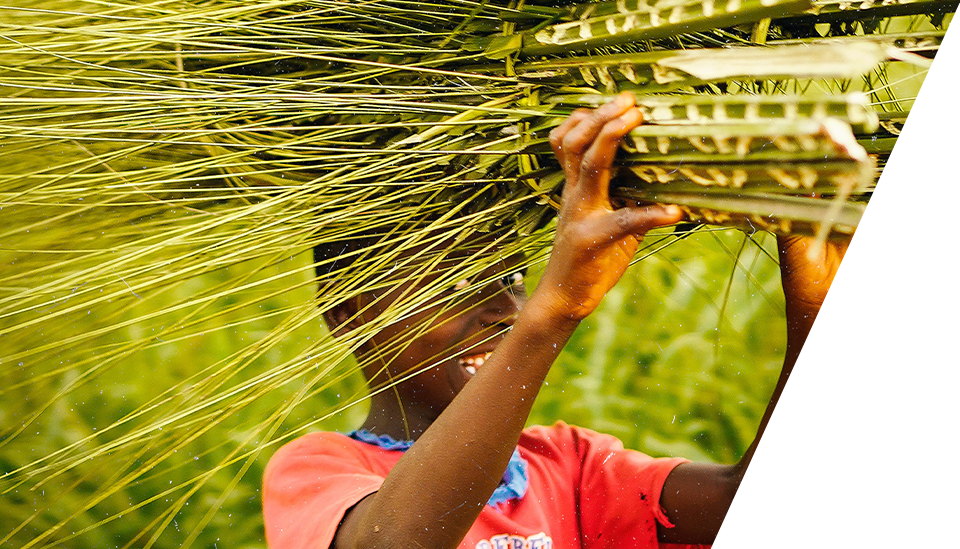OCEANS 14 – Implementing the Samoa Pathway and SDG 14 by SIDS, through Public-Private Partnerships

Robynne Anderson represented the IAFN on the panel of the side-event on Oceans 14: Implementing the Samoa Pathway and SDG 14 by SIDS through Public-Private Partnerships, organized by the Permanent Mission of the Netherlands, in collaboration with the United Nations Office of the High Representative for Least Developed Countries, Landlocked Developing Countries and Small Island Developing States (UN-OHRLLS).
The event took place on 28 September 2015 from 16.00 to 18.00 in Conference Room 2 at the United Nations Headquarter.
Your highness, your Excellencies, and all here who share a passion for oceans,
I have the honour to represent a coalition of international farm, fisheries and agri-business trade associations known as the International Agri-Food Network. We span tens of thousands of private enterprises, big and small, who are united in their mission to enhance food and agriculture as an engine for development, as well as in their daily commitment to driving positive change and meeting the critical challenges as set out in the Global Goals.
As a farm girl from a rural corner of a vast continent [NB: Canada], I have always been fascinated by the reaction to the word ‘agriculture’. When FAO was founded, the UN agreed it meant cropping, livestock, forestry, horticulture and fisheries. Oceans and agriculture are intertwined.
Feeding People
Firstly, achieving zero hunger means a focus on food, nutrition and diverse diets. Fish provides 50 to 90% of animal protein of many SIDS – typically three to four times the global average. In terms of livelihoods, close to 50% of households in Pacific SIDS derive their first or second income from catching and selling fish: So enabling people to make a living producing food is essential and so is fostering diversity of the food available to further healthy diets.
Planet
Oceans must be prized for their many gifts, including their ability to feed our people. FAO, led by Director General Jose Graziano da Silva, provides useful global reports such as the State of World Fisheries and Aquaculture report that inform our understanding of those linkages. The Food and Agriculture Organization (FAO) estimates that 55 million people were engaged in capture fisheries and aquaculture in 2010. 90% of the capture are small-scale fisheries. (FAO 2012)
From my own experience, nobody knows the dynamics of the land like a farming family, and nobody knows the marine environment like those who are at sea. It is fishers and SIDS inhabitants that are on the front line of challenges such as ocean acidification, coastal erosion and pollution, at the same time as taking the lion’s share of responsibility when it comes to the conservation of marine resources.
Private sector is working to conserve and sustainably use natural resources such as the oceans. One thriving example is the International Seafood Sustainability Foundation (ISSF) and its efforts on tuna, which lies at the heart of food security for Pacific Island Countries and Territories (PICTs) and represents seven times the value and ten times the volume of all other fish caught in the Pacific Islands combined. ISSF is supporting pilot projects in the Western and Central Pacific to enhance and expand electronic reporting and monitoring tools so vital fisheries data can be more quickly available for stock assessment and compliance purposes. The work on improving fisheries management and embracing stewardship practices in these countries is better for job creation, healthy fish populations, marine eco-systems, government revenue and the food security of local populations.
There is tremendous innovation underway to build sustainability as part of the process. During the last three decades, capture fisheries production increased from 69 million to 93 million tons; during the same time, world aquaculture production increased from 5 million to 63 million tons (FishStat).This is a prospering aspect of water economies which is continually evolving in its management. For instance one of our members, the Global Salmon Initiative, works with the World Wildlife Fund to improve the industry’s impact focussing on four priority areas: biosecurity and disease management; sourcing sustainable feed; industry standards and transparency through industry communications. It is working successfully to make fish production better.
Investment
Yesterday, I heard the representative of the Marshall Islands express frustration and the inability to attract the investment needed to sustainably fish in many SIDS countries due to a lack of infrastructure and market channels.
The Samoa Accelerated Modalities of Action identifies the unique needs of SIDS nations in infrastructure, transport and urban-rural linkages.
Private sector can be a partner in achieving these goals at a macro investment level but also at a small to medium enterprise level. I urge us all to look at a fisherman and see a person with the desire and skills to make a difference in their community. They work hard, and in SIDS particularly, often with little to no capital to allow them to further their training, improve their equipment, and get access to markets. Empowering them is a pathway to prosperity.
Conclusion
Without engagement from the private sector, there can be no lasting positive change resulting from the Samoa agenda and the Global Goals. We thank the leadership of the Kingdom of the Netherlands in placing Public Private Partnerships at the top of the UN agenda and helping to emphasise the efforts of the private sector in investing so that all fisheries managers, big and small, can be efficient, sustainable and make informed decisions about their business practices.
For more information:

